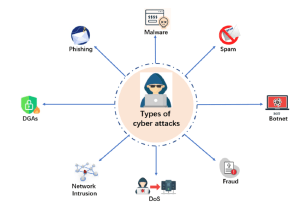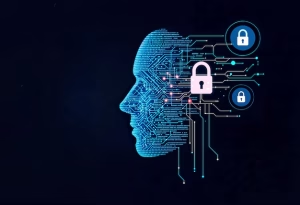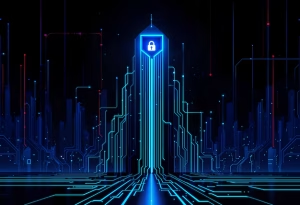What Is Cybersecurity and Why Your Business Can’t Afford to Ignore It
In today’s interconnected world, cybersecurity is not just a technical issue—it’s a business imperative. With digital systems underpinning everything from communications to operations, any breach can result in massive losses. At Liberation Technology Services, we help safeguard your business with advanced, multi-layered security strategies tailored for the threats of today and tomorrow.
What Is Cybersecurity?
Cybersecurity is the practice of protecting networks, systems, applications, and data from digital attacks. These attacks often aim to steal sensitive data, disrupt operations, or extort money from businesses. Effective cybersecurity programs involve a blend of technology, policy, processes, and human expertise to protect your critical infrastructure.
Cybersecurity isn’t just about installing antivirus software or having a firewall; it encompasses the full spectrum of IT security measures. As hackers evolve, so must your defenses. A well-executed cybersecurity strategy enables companies to stay ahead of malicious actors and reduce operational risk.

Goals of a Cybersecurity Program
The primary goal of a cybersecurity program is to identify threats early, prevent breaches, and mitigate damage from successful attacks. With attackers becoming more sophisticated, it’s essential to not only block threats but also ensure business continuity in the event of a breach.
Cybersecurity technologies typically fall into two categories: preventative and responsive. Preventative technologies stop attacks from breaching systems, while responsive tools help detect, contain, and remediate incidents once they occur. The faster you detect and neutralize a threat, the less damage it can do.
Why Cybersecurity Is Important
As businesses digitize, their data and systems become more valuable and vulnerable. A strong cybersecurity strategy helps:
- Prevent data breaches and loss of intellectual property
- Protect reputation and customer trust
- Avoid financial losses due to downtime or ransom demands
- Ensure regulatory compliance and prevent legal penalties
- Support operational resilience in the face of digital threats
Every sector—from healthcare and finance to government and retail—relies heavily on digital systems. Cyberattacks can halt operations, compromise patient or customer data, and erode years of earned trust. Cybersecurity helps mitigate those risks.
Common Types of Cybersecurity Threats
Understanding the threat landscape is key to building effective defenses. Some of the most common cyber threats include:
- Malware: Viruses, spyware, and worms that corrupt or steal data
- Ransomware: Encrypts files and demands ransom for decryption
- Phishing: Fraudulent emails that trick users into giving up credentials
- Insider Threats: Disgruntled employees or vendors abusing access
- DDoS Attacks: Flood servers with traffic to cause outages
- APTs (Advanced Persistent Threats): Long-term, undetected breaches
- Man-in-the-Middle (MitM) Attacks: Intercepting private communications
- SQL Injection: Injecting malicious code into web apps
- Botnets: Networks of infected devices used in coordinated attacks
These attack vectors continue to evolve. For example, phishing emails have grown more convincing, using real company logos and domain names. And with AI tools now available to bad actors, even amateur hackers can launch dangerous attacks.
Elements of a Strong Cybersecurity Program
A comprehensive cybersecurity strategy includes:
- Network Security: Protecting IT infrastructure from intrusions
- Cloud Security: Securing data and services hosted in the cloud
- Application Security: Preventing app-based vulnerabilities
- IoT Security: Securing smart and connected devices
- Identity & Access Management (IAM): Controlling user access levels
- Endpoint Security: Protecting individual devices from compromise
- Data Protection: Encrypting and backing up sensitive data
Each of these elements works together to protect the organization at multiple levels. For example, endpoint protection alone is ineffective without strong IAM policies and encrypted communication.
Top Cybersecurity Challenges
Modern businesses face several cybersecurity hurdles:
- Rapidly evolving threats from cybercriminals
- Human error and lack of employee training
- Remote work and unsecured home networks
- Bring Your Own Device (BYOD) policies that are hard to monitor
- Increased attack surface due to cloud services and digital growth
- Shortage of skilled cybersecurity professionals
One of the biggest misconceptions is that cybersecurity is solely an IT department’s responsibility. In reality, every employee plays a role in maintaining security. A single careless click can compromise the entire network.
Best Practices for Cybersecurity
To stay secure, businesses should:
- Adopt a multi-layered defense strategy: Combine tools and tactics across all entry points.
- Implement Zero Trust: Never trust, always verify. Validate all users and devices before granting access.
- Use strong IAM (Identity and Access Management) solutions: Deploy role-based access controls and enforce multi-factor authentication.
- Continuously train staff: Phishing simulations and regular awareness sessions help reduce human error.
- Monitor and respond to threats in real-time: Use SIEM (Security Information and Event Management) tools and 24/7 monitoring services.
- Keep software up to date: Patch management can prevent attackers from exploiting known vulnerabilities.
- Regularly back up data: Ensure business continuity even if ransomware hits.
How Liberation Technology Services Can Help
At Liberation Technology Services, we empower your business with enterprise-grade cybersecurity solutions tailored to your infrastructure. Whether you’re securing cloud apps, remote devices, or hybrid networks, we help reduce your risk with:
- Advanced threat detection and mitigation tools that provide visibility and control
- Identity and access management frameworks to safeguard user authentication
- DDoS protection to keep your websites and services running
- Compliance tools for GDPR, HIPAA, SOC 2, and other regulatory needs
- End-to-end encryption for data in transit and at rest
- Secure cloud hosting and endpoint protection for remote workforces
We take a holistic approach to cybersecurity, combining best-in-class technologies with expert consultation. From conducting vulnerability assessments to deploying managed detection and response services, we tailor our solutions to meet your business needs.

Protect What Matters Most
Cybersecurity is not a luxury—it’s a necessity. As attack methods become more sophisticated, your defenses must evolve too. Partner with Liberation Technology Services to strengthen your digital fortifications and ensure business continuity in an age of cyber risk.
Cyber threats won’t wait. The time to act is now.
Schedule a free cybersecurity consultation today to assess your vulnerabilities, get actionable recommendations, and fortify your IT infrastructure.

